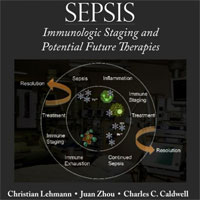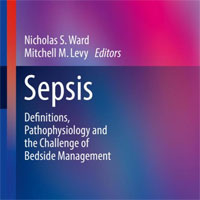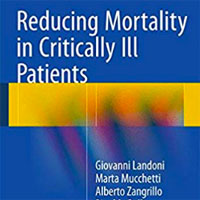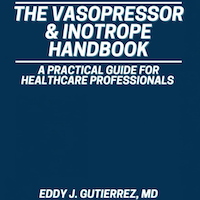Tag: ventilator
Splitting Ventilators to Provide Titrated Support to a Large Group of Patients
COVID-19 can out-strip the number of mechanical ventilators available to us. This has led to interest in using a single ventilator to support multiple patients. This post will review the theory and evidence regarding this... read more
COVID-19 Airway Management – The Role of Simulation
Health services around the world are faced with the challenge of preparing for the impact of COVID-19 on their communities as we all prepare for a potential global pandemic. I see a great role for simulation in process... read more
Ventilator Management: Advanced Concepts In Critical Care
Mechanical ventilation is a broad subject that encompasses many factors that must be considered while providing overall resuscitation. It is not as easy as just entering in a rate and tidal volume and pushing start. Critical... read more
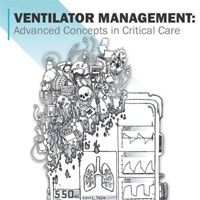
The Association Between Ventilator Dyssynchrony, Delivered Tidal Volume, and Sedation Using a Novel Automated Ventilator Dyssynchrony Detection Algorithm
We developed a computerized algorithm that accurately detects three types of ventilator dyssynchrony. Double-triggered and flow-limited breaths are associated with the frequent delivery of tidal volumes of greater than... read more
5-year Study Shows Predominance of Non-Device-Associated Pneumonia
Among more than 160,000 patients admitted to University of North Carolina hospitals during a recent 5-year period, non-device-associated, or ND, pneumonia was implicated in three of every four nosocomial pneumonia cases,... read more
Critical Pediatric Heart Deaths Drop by 24% at Hospitals With Cardiac ICUs
Major complications fall by 12%, time on a ventilator declines by 13% among children in the cardiac ICU at PC4 hospitals As a pediatric cardiology fellow nearly a decade ago, Michael Gaies remembers asking hospital colleagues... read more
Adaptive Mechanical Ventilation with Automated Minimization of Mechanical Power
Adaptive mechanical ventilation with automated minimization of inspiratory power may lead to more lung-protective ventilator settings when compared with adaptive mechanical ventilation according to Otis' equation. Comparing... read more
Prophylactic Antibiotics After Cardiac Arrest?
This is a multicenter, double-blind, placebo-controlled trial of patients resuscitated from shockable out-of-hospital cardiac arrest. Patients were randomized to placebo versus intravenous amoxicillin-clavulanate for two... read more
Myocardial Ischemia During Ventilator Weaning
This observational study showed the pulmonary edema (WiPO) occurred in a significant number of critically ill patients who failed a first spontaneous breathing trial (SBT), while cardiac ischemia (WiCI) was less frequent.... read more
Automated vs. Non-automated Weaning for Reducing Mechanical Ventilation Duration for Critically Ill
Automated systems may result in clinically meaningful reduced durations of weaning, ventilation and ICU stay. Overall, these systems appear to be safe and can be considered a reasonable approach in the management of ventilator... read more
Mechanical Ventilation Management during ECMO for ARDS
Ultra-protective lung ventilation on ECMO was largely adopted across medium to high case-volume ECMO centers. In contrast with previous observations, mechanical ventilation settings during ECMO did not impact patients' prognosis... read more
Beyond Ventilator-induced Diaphragm Dysfunction
Respiratory muscles are essential to ensure the vital function of breathing. The diaphragm is a unique respiratory muscle, because it contracts throughout the individual's life span without resting, not even during sleep.... read more
The negative effect of initial high-dose methylprednisolone and tapering regimen for ARDS
The efficacy of corticosteroid use in acute respiratory distress syndrome (ARDS) remains controversial. Generally, short-term high-dose corticosteroid therapy is considered to be ineffective in ARDS. On the other hand, low-dose,... read more
Effect of a Low vs Intermediate Tidal Volume Strategy on Ventilator-Free Days in ICU Patients Without ARDS
In patients in the Intensive Care Unit (ICU) without acute respiratory distress syndrome (ARDS) who were expected not to be extubated within 24 hours of randomization, a low tidal volume strategy did not result in a greater... read more
Tidal Volume Strategies for those without ARDS
This paper justifies utilizing a higher tidal volume strategy for our patients without primary ARDS/pulmonary disease. This can be very useful. Patient comfort and patient-ventilator synchrony are extremely important. This... read more
How to Improve Patient-ventilator Synchrony
Asynchronies are a frequent issue in ventilated patients. They represent a mismatch between the inspiratory and expiratory times of patient and ventilator, and thus a failure to provide ventilated patients with optimal assistance.... read more
Risk Stratification Using Oxygenation in the First 24 Hours of Pediatric ARDS
Oxygenation measured 24 hours after acute respiratory distress syndrome onset more accurately stratifies risk, relative to oxygenation at onset, in both children and adults. However, waiting 24 hours is problematic, especially... read more
Letting the Patient Decide: A Case Report of Self-Administered Sedation During Mechanical Ventilation
It is common for critical care nurses to administer sedative medications to patients receiving mechanical ventilation. Although patient-controlled analgesia is frequently used in practice to promote effective self-management... read more
Score for Predicting Ventilator Weaning Duration in Patients With Tracheostomies
A score derived from ventilator settings may help clinicians predict the timing of ventilator liberation in patients requiring prolonged mechanical ventilation. Of 372 patients, 72% were liberated from mechanical ventilation.... read more
Implementing a bedside assessment of respiratory mechanics in patients with ARDS
Implementing a systematic respiratory mechanics test leads to frequent individual adaptations of ventilator settings and allows improvement in oxygenation indexes and reduction of the risk of overdistention at the same time.... read more
Doubling Down on Re-Expansion Pulmonary Edema: Treatment Approach and Ventilator Management
The treatment of choice for a pneumothorax is a chest tube, and when the small pig-tail catheter doesn’t do the job, the answer is to replace it with a larger bore – right? Not so fast. The exact mechanism of REPE is... read more
Communicating with Conscious and Mechanically Ventilated Critically Ill Patients
Ventilator-dependent patients in the ICU often experience difficulties with one of the most basic human functions, namely communication, due to intubation. Although various assistive communication tools exist, these are infrequently... read more





